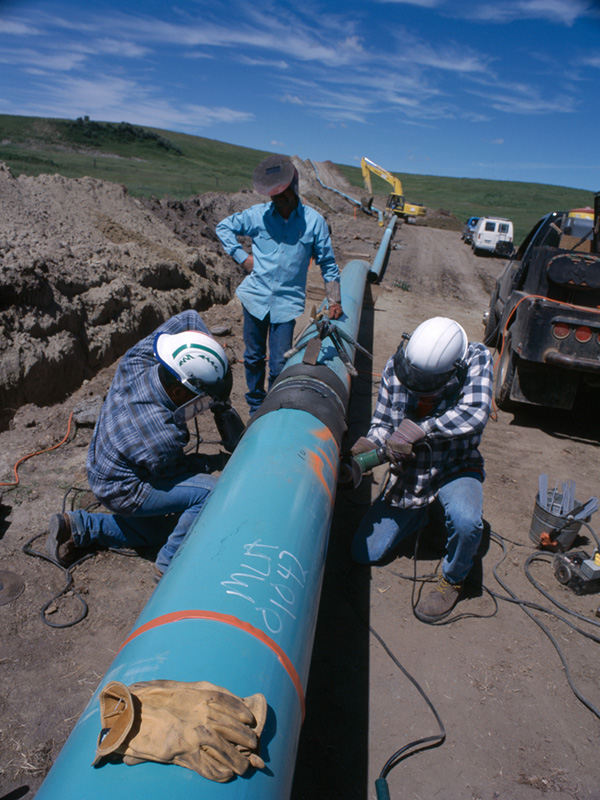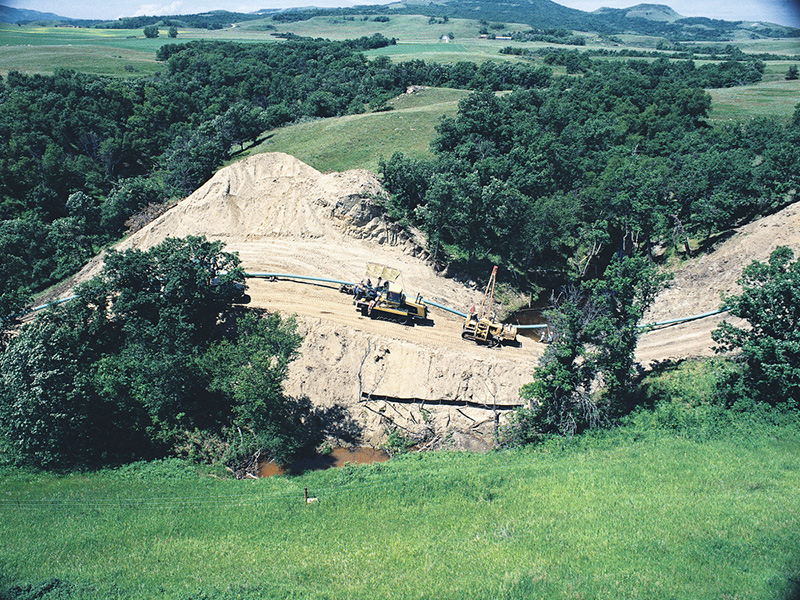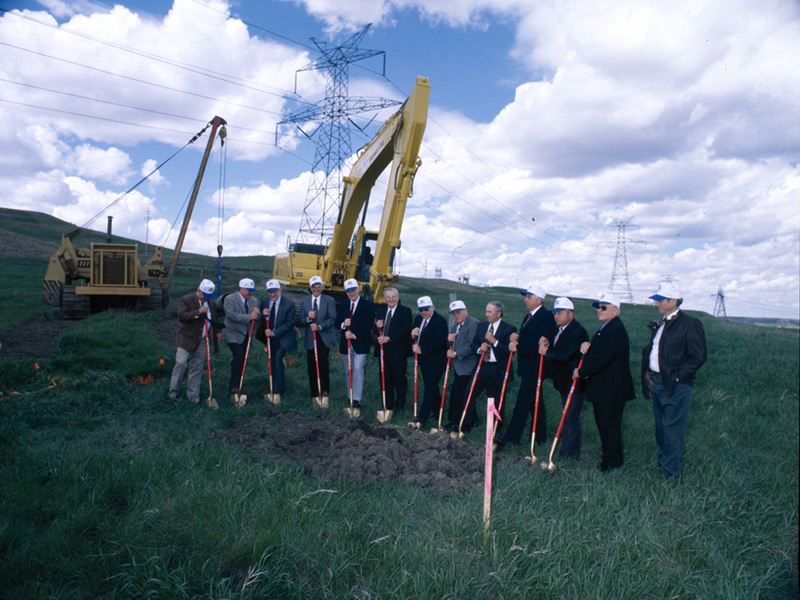- Products
- About
- Responsibility
- Environment
- News
- Contact us
- Careers
-
In 1999, Basin Electric invested more than $100 million to build the infrastructure and pipeline that now delivers carbon dioxide produced at Dakota Gas to Saskatchewan, Canada where companies use it for enhanced oil recovery operations.

The August 1999 issue of Basin Today talks about the construction of this project in the story, “CO2 pipeline construction report – from the trenches”:
“Since the May 12 groundbreaking, an assembly-line operation has been moving along at about two miles a day. As of Aug. 2, 60 percent of the pipeline construction in the United States was completed. The entire pipe is expected to be in the ground by Oct. 1. A period of hydro testing will follow to check the pipeline for leaks. Then the line will be dried to a dewpoint of -50 degrees F to prepare it for placement into service.”
Download a PDF to read the full story, on page 1: Basin Today August 1999

The first CO2 was sent to Canada in fall 2000. Dakota Gas currently exports up to 155 million cubic feet of CO2 per day to Canada – about two-thirds of the readily-available CO2 when running at full rates.

Dakota Gasification Company
Headquarters:
1717 East Interstate Avenue | Bismarck, ND 58503-0564 USA
701.223.0441 | 1.800.242.2372
Great Plains Synfuels Plant
420 County Road 26
Beulah, ND 58523-9400 USA
701-873-2100
A subsidiary of:
Basin Electric wants all interested and qualified candidates to apply for employment opportunities. If you are an applicant with a disability who is unable to use our online tools to search and apply for jobs, or who needs other assistance or accommodations, please contact us at 701-223-0441. Please indicate the specifics of the assistance needed or provide your contact information, and a Basin Electric Human Resources representative will contact you. Basin Electric is an Equal Employment Opportunity Employer regarding race, color, religion, sex, sexual orientation, gender identity, national origin, disability, and veterans status.